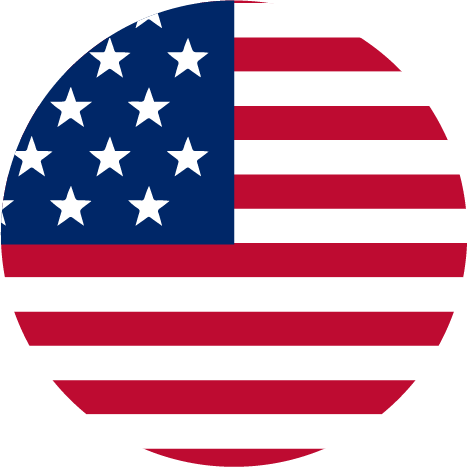Why Your Company Can't Afford To Ignore Team Alignment

In efforts to scale their businesses, many organizations that have implemented the 10 Rockefeller Habits reported that their team grew more aligned as a result. Here are just a few examples:
"With all the challenges of driving a rapidly growing global business, the alignment
we have created between our international offices by utilizing the Rockefeller
Habits has been hugely successful."
~ Bryan Hansel, CEO, Virdev
“I’ve uncovered the greatest assets so far in my business by mastering my executive meetings and then focusing my management teams using the principles outlined in mastering organizational alignment and focus.”
~ Christopher Guerriero, President, The Executive Fitness Club, Inc.
This isn’t surprising, especially since many of the 10 Rockefeller Habits focus on fostering team alignment across every level of the organization.
Why is achieving alignment so important for business growth? And how do you rally your team to be aligned and primed for phenomenal growth?
In “Mastering the Rockefeller Habits” and “Scaling Up”, I go over the importance of team alignment and the tools you can use to achieve it. This article will share some of the best frameworks and proven tools to align your team and scale up your organization.
Why is Team Alignment Important?
First of all, let’s look at what team alignment actually means in practice.
An aligned team is a team who aspires to achieve the same vision, understands the goals, and is made up of individuals who understand how to contribute their strengths to them.
When people are aligned to do what needs to get done, things can get done a whole lot faster and a whole lot easier. In other words, team alignment creates numerous benefits including:
- Improved productivity
- Improved performance
- Improved communication
- Higher motivation and morale
- Lower rates of staff turnover
- Increased efficiency to achieve goals
- Ability to make key decisions faster
- Agility to adapt to a changing market
Team alignment becomes even more important when you want to scale. This is because you will need new systems and structures to handle the complexity that comes with growth.
For example, though expanding from three to four people grows the team by only 33%, you will see that complexity increases by 400%. Here’s why.

In a start-up situation of just two people, there are two channels of communication (or degrees of complexity), and anyone in a relationship knows that is hard enough. Add a third person (or customer or location or product), and the degree of complexity triples from two to six. Add a fourth, and it quadruples to 24.
This growing complexity makes team alignment fundamentally important when you want to scale.
How Can You Achieve Team Alignment?
To achieve team alignment, you need to easily communicate a strategic plan for all your employees, so everyone can stay focused and aligned.
Even if YOU have a clear vision of where you want your company to be in one, five or ten years from now, without a strategic plan that unites everyone, that vision is just a dream.
The One Page Strategic Plan (OPSP) is our best-known and most widely used tool that puts everyone on the same page. It is designed to drive alignment, accountability, and focus.

Learn how to use the OPSP and download the editable OPSP template here.
The OPSP is based on the Planning Pyramid that graphically conveys to everyone in your organization how the various vision pieces — values, purpose, targets, goals, actions, schedules and accountabilities — align, establishing a common strategic language that is easy to use and helps eliminate confusion.
A key component of creating your OPSP is the Big, Hairy, Audacious Goal (BHAG). This is a long-term, 10 to 25-year goal, guided by your company’s core values and purpose.
Your BHAG is your Everest. It is one clear purpose and vision that everyone on your team is on board with. If anyone is ever unclear which direction to head towards, or if a decision is beneficial for the company, they only need to ask, “Is this getting us closer to our BHAG?”
This clear goal also will influence all current and future recruitment, as you’d want to hire the best people in order to achieve this audacious goal. Not only that, but this clarity will also attract the right people who also want to be a part of realizing this goal.
How Do You Keep Your Team Aligned When Executing Your Strategy?
Now that you have everyone aligned with and moving towards the same BHAG, the next step is keeping everyone aligned when you’re executing your strategy.
When it comes to the best framework to execute your company’s strategy, I proudly stand by our Rockefeller Habits Checklist. This simple set of habits has already helped over 40,000 companies scale up while reducing the time needed to run the business — many of which scaled to $10 million, $100 million, and a few to a billion and beyond.
That’s the dream, isn’t it?
One of the most important habits from this checklist is establishing a communication rhythm so information moves through your organization accurately and quickly, thus ensuring everyone stays aligned as the team executes the strategy.
There are four types of meetings you should have to establish this communication rhythm. 
It might sound counter-intuitive to have this many meetings, but when executed properly it actually saves everyone a lot of time in the long run.
The most important of all these meetings is not the “big meetings”, but in fact the short and powerful daily huddle.
The daily huddle tracks progress and brings out sticking points that are blocking your execution. This will help you avoid minor train wrecks and quickly take advantage of unforeseen opportunities. The daily huddle can save everyone an hour or so of needless email updates and ad hoc interruptions. Finally, issues that emerge from daily huddles drive the main topics for the weekly meeting.
Alignment Drives Performance
Here’s a case study of an organization that successfully created team alignment.

Marlo Furniture applies scoreboards and forecasting tools to keep track of shared goals. By also establishing communication rhythm with the four types of meetings, they successfully kept every employee aligned to achieve organizational objectives.
Every quarter, the company closes the stores and hosts an all-employee, half-day training program for their 500 associates. A slideshow is presented with the company vision, the "five big rocks," last quarter's achievements and next quarter's plans.
Similar to an in-house trade show, managers have booths for employees to learn more about each division and its critical number and how the business is run.
Spearheading the success at Marlo's is the forecasting and scorekeeping at their weekly huddles. Managers track critical numbers on large whiteboards installed in all the stores' meeting rooms. Upon arriving at the weekly meeting, they write their critical numbers on the board.
After a round of good news stories, the team looks at every line item to check the actual numbers against those predicted. Significant variances are reviewed and solutions are created to head off any downturns in productivity. Once the numbers are discussed, a new round of forecasting next week's numbers begins.
The results speak for themselves. In six months, Marlo reduced non-sales staff and payroll 20 percent, while revenues increased and managerial staff turnover dropped from 30% to 2%. In addition, inventory turns increased and the number of customers who would refer Marlo's to a friend increased from 80% to nearly 100%.
How Can You Accelerate Team Alignment?
Getting your organization to adopt new systems or ways of operation can be a challenge. This can make your efforts to align the team and scale your business slow and frustrating.
Thus, it’s important to get as many people on board with these changes as soon as possible, especially those who are on the executive team or are team leaders. The best way to do this is to get your key team members to participate in the same training. After all, a company who learns together on the same path will inevitably grow together. Take FAB Group NZ as an example.
After all, a company who learns together on the same path will inevitably grow together. Take FAB Group NZ as an example.
FAB Group NZ is a franchise business in New Zealand that operates in the business of skincare and appearance medicine. For several years, they were only sending a few members from the senior management team to attend Growth Forums across Australia and New Zealand.
However, the rest of the management team was not on the same page as those who benefited from the Growth Forums. So Fab Group realized that in order to truly get everyone aligned, the whole senior management team needs to be on the same learning journey.
So in 2015, FAB Group NZ enrolled nine people from their senior management and leadership team to complete the online Scaling Up Course with me.
Thanks to that, they were able to quickly implement a lot of the rhythms from the Rockefeller Habits in their organization. They also aligned on their core values for the first time in their history, and the impact went from top to bottom.
As a result, FAB Group scaled immensely. For five to six years in a row, they experienced compounding year-on-year growth of 15% plus and they’ve positioned themselves as the market leader in New Zealand with 50 clinics nationwide.
The impact of training their team together has been so powerful, that FAB Group continues to commit to training their team with Growth Institute. They have since enrolled two more groups of ten staff into the Scaling Up Course in 2017 and 2018 respectively.
Team Alignment Gets You to the Top
The consensus is clear. An aligned team is an efficient team that can move faster, think faster, and grow faster. While it’s critical to have the right systems and frameworks that will align your team, it is equally important to simultaneously train the key leaders of your team on how to implement these systems and framework.
That's how you can achieve maximum efficiency and productivity in the shortest time possible.
For a practical way to learn how to apply this concept into your current business while getting mentorship, peer-to-peer feedback, and customized support as you implement, check out my Scaling Up Master Business Course here.
Download the OPSP
The One Page Strategic Plan (OPSP) is our best-known and most widely used tool that puts everyone on the same page.
To get started with the OPSP, download the document here. If you print it out, place the first page to the left of the second page. This will give you a continuous single-page document on an 11 x 17 inch (A3) piece of paper.  As you fill in the document, think of it as a giant crossword or Sudoku puzzle. Figure out what you can, and let that help you determine the rest. “Get it down; then get it right” is our mantra.
As you fill in the document, think of it as a giant crossword or Sudoku puzzle. Figure out what you can, and let that help you determine the rest. “Get it down; then get it right” is our mantra.



